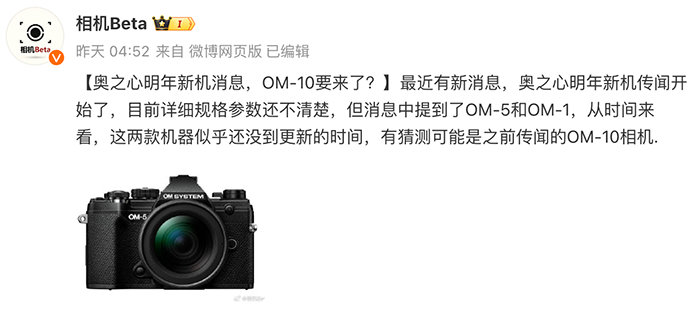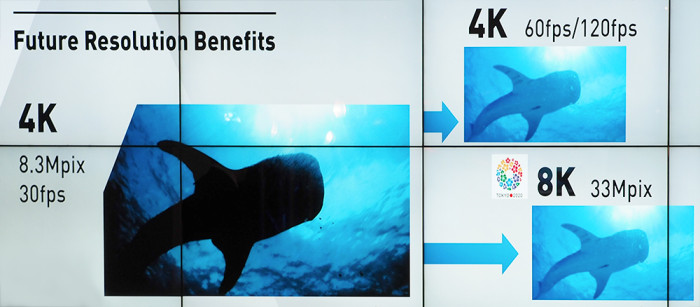Video review of the new Panasonic GH4 and FZ1000 2.0 Firmware
The following article is a gues post from “Mpgxsvcd“.
—–
Here is a video review of the new Panasonic GH4 and FZ1000 2.0 Firmware. This review will give you an idea of what the different aspect ratio video looks like and what the crop factor looks like for each camera and each aspect ratio.
It also goes into some detail about the wireless functions of the Panasonic cameras. I will try to make another video to explain how to get the most out of the built-in wireless features.
Here is the text from the video’s narration.
Panasonic recently released a firmware update for the Panasonic GH4 and FZ1000 cameras. The main benefit of this update is to make it very efficient to extract and share still images pulled from Ultra HD video. This video will focus on showing you how to utilize this new photo from video mode and how to efficiently share those images.
I had the opportunity to test the new firmware on both the Panasonic GH4 and FZ1000 this weekend. Both cameras have the new photo from video mode now. The upcoming LX100 will have it as well.
Most people will say that taking stills from video is worthless because video simply doesn’t have enough resolution. That was true before when cameras only shot 720p or 1080p video. However, the Panasonic cameras now shoot perfect 4K video that has 8 megapixels worth of resolution. That is plenty of resolution even for 8×10 prints.
This mode will not meet everyone’s needs though. It probably won’t be of interest to anyone who is accustomed to shooting RAW files and spending countless hours editing and processing them so that they can print in large formats.
It is geared towards the person who simply wants to shoot video but also have the option to extract high quality stills to share immediately via the cameras built-in wifi. That is the scenario that I typically use the camera in. I used eye-fi cards for this before. However, those cards are not fast enough to record the 4K video on and they are very prone to physically breaking because of their inferior build quality. With this new photo from video mode I have replaced all of my Eye-Fi cards with new high speed but low cost 128 Gb Transcend cards.
The new video mode is enabled by going to the custom video mode selection on the top dial. Then press the menu button and select the “4K Photo” option in the video settings menu. You can choose the “set” option to select the aspect ratio of the video.
Normally widescreen 16:9 is the only option for 4K video. However, Panasonic allows us to choose from any aspect ratio they offer. This is a great option because all of the aspect ratios maintain the same field of view. Panasonic is able to do this because all of the cameras with this feature have a sensor with more than 4k resolution.
Panasonic crops the sensor down to 4k resolution in all of these cameras. That gives you a narrower field of view than in pure stills mode. However, it allows you to match your video aspect ratio to the aspect ratio of your subject.
I set my camera to use 3:2 aspect ratio because that matches the aspect ratio of the LCD screen and it gives me more vertical height in the video to crop down to 16:9 when I do image stabilization in post processing. I tend to render to 2.7K instead of 4K because most monitors are only 2.7K or less right now.
The amount of cropping and the resulting field of may depend on how many total pixels the camera has. For the FZ1000 it has 20 megapixels. However, it has a 3:2 aspect ratio sensor. The GH4 has a 4:3 aspect ratio sensor with only 16 megapixels.
If you compare the amount of cropping for the 4:3 modes of both cameras you will see that they both end up with similar fields of view in the 4:3 mode. In 3:2 mode the GH4 has a slightly tighter field of view in the RAW format but it actually has a slightly wider field of view for the stills from video crop mode.
The LX100 only has a 12 megapixel 4:3 sensor for RAW images so I predict that its crop for the stills from video mode will be very minimal. With its wide angle 24mm lens it will be the best choice for up close footage and images with this new feature. I bought the LX100 instead of a wide angle lens for the GH4 because I knew the LX100 will get me a wider field of view with this new still image from video mode.
You have always been able to extract 8 megapixel stills from the 4K video in the GH4. However, this update will add EXIF settings data to the JPG that is saved and it also allows you to set memory points in the video so you can quickly jump to the points of interest instead of wading through hours of unwanted video.
The biggest problem with the memory points is that they can only be set with the function 1 button. The function 1 button really isn’t in a great place to press while holding the camera for filming. It is too far back for a fore finger to press it without shaking the camera. Instead it would be much better if we could use one of the other function buttons with our thumb like the Function 4 button.
Hopefully Panasonic will allow us more control of these buttons in a future firmware update.
They have also added a new video loop function that saves the last 10 minutes of video and overwrites the previous clips automatically. It is a great concept but it has several major flaws. First they forgot to include the memory function for this loop mode. That means I have to wade through hours of video to find the section I want.
They also store the 10 minute segment as 5 separate video files in 5 separate folders. It is completely unreasonable to try and wade through all of these separate clips in the camera or on the computer. This new function is a complete and total failure in my opinion. I won’t use it until they change it so that you can use the memory function and so that the camera stores the files all in a single folder in the camera. It also would be nice if when you play the first file it will automatically play the next file at the end of the clip.
Another really cool feature is that the 4x and 2x digital zoom functions are really not that bad in 4K mode. This digital zoom is not lossless like the lower resolution ETC mode is. However, it does appear to crop the sensor by 4x first and then scale the image to a 4K resolution.
The scaling is actually not that bad. It now allows you to use the 100mm F2.8 lens like a 400mm F2.8 macro lens. This produces very acceptable macro images and videos with deeper depth of field than a true 400mm F2.8 lens would have.
For macro work and birding the digital zoom feature is great in my opinion.
The AF in stills from video mode is also vastly improved over the 4K video only mode. It still isn’t quite as good as the 1080p @ 60 FPS mode but I think it is usable now. Before this new upgrade I always said that the 4K Autofocus was completely useless because of all of the hunting that it did.
The camera can still have some skewing because of the rolling electronic shutter affect. However, it is significantly less than almost everything but the Nikon 1 series cameras. In my opinion it is not a huge drawback because it only occurs when panning quickly or with extreme horizontal motion. I haven’t had it ruin any of my images or videos yet.
Probably the biggest surprise is that Panasonic finally fixed the Auto ISO logic in the Program Priority mode. Before the camera would always select 1/60 of a second shutter speed with wide angle lenses in Program Priority mode with Auto ISO even when higher ISO values were available. That was very frustrating because that is too slow of a shutter speed for any moving subjects. Even a slight head turn would cause blurring at that shutter speed.
Now the Program Priority mode will always try to select a shutter speed around 1/120 of a second. That prevents the rolling shutter affects from Fluorescent lighting and it prevents blurring from subject motion. The camera will sometimes go to 1/100 of a second but it only goes below that if you are in extreme low light situations and it cannot increase the ISO anymore.
The GH4 allows the ISO to go up to ISO 6400 in photo from video mode. However, the FZ1000 only allowed up to ISO 3200. I am not sure what the LX100 will allow.
The biggest benefit to the new mode is supposed to be that you can now quickly shoot high quality video and stills and share it online. However, Panasonic’s built-in wireless capabilities are just not up to par yet.
When you extract a still from a movie it will not trigger the upload while you shoot mode like the regular stills mode will. I have to go in and manually upload the pictures extracted from the movies which is a real pain because that mode doesn’t allow me to shoot pictures while uploading.
In addition their app only allows you to upload the images in a very low resolution format. Their wireless functions need a complete overhaul. There are too many things that need to be fixed for me to mention here.
Hopefully, one day they will devote a firmware and app update to fixing the wireless capabilities of their camera.
However, this new update has transformed the way I use the camera. I shoot video almost exclusively now. I usually don’t have time to edit RAW images on the computer so I prefer to just shoot video and extract the stills that I want. I understand that some people still require full resolution RAW capabilities. However, the vast majority of photographers out there can benefit from this new functionality.
Being able to shoot 8 megapixel high quality images at 30 FPS means you will almost never miss that special moment ever again.



